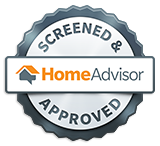
HOW CAN WE HELP YOU CONFORM TO SB-721?
We can restore balconies per “SB 721” code that your inspector will point out. The following is a blog post credited to Deck and Balcony Inspections, Inc. Please go to their site directly to contact them and schedule an inspection. Their blog has very helpful information and so we have used it here for your convenience. Again, all credit goes to them so make sure to visit their page and send them your appreciation. After you get your deck inspected, SYNTECH can help with the repairs anywhere in Southern California.
BLOG POST:
In 2018, the California Senate signed Senate Bill 721 “SB 721” into law.
The bill focuses on Exterior Elevated Elements (EEE for short) and imposes stringent safety and inspection standards for decks, balconies, and walkways – all with a deadline of January 1, 2025.
This blog outlines the inspection requirements set forth by SB-721 and the penalties non-compliant building owners could face.
Let’s dive in.
Why Was Senate Bill 721 Passed?
SB-721 was passed after a tragic balcony collapse in 2015. The balcony collapse occurred at a Berkley apartment building and killed six college students.
During a post-collapse evaluation, experts discovered that the balcony had been inadequately waterproofed, and that the balcony’s load-bearing wooden frame had rotted, compromising its structural integrity.
The inspection also found that the property manager had delayed maintenance, despite clear indications of water damage.
They ruled that the balcony collapse could have been avoided if only the property owner had completed the needed maintenance.
The victims’ families won a multimillion-dollar settlement against the property management company in charge of the apartment building and the owners of the building.
The tragedy and subsequent legal battle sparked a nationwide conversation about who is responsible for residential buildings’ safety and structural integrity.
In response, California lawmakers passed SB-721, which went into effect on January 1, 2019, and is part of California’s several balcony laws.
Who Is Affected by SB 721?
The law affects all buildings in California with 3 or more multi-family units.
This includes triplexes, quads, fourplexes, and larger apartment buildings.
Under the new law, these units must have all elevated exterior elements inspected.
“Exterior elevated elements” include decks, porches, stairways, walkways, and any other entry structure elevated more than 6 feet above ground level.
Currently, the law applies to structures made from wood or with a wood-based framework.
A last-minute amendment to SB-721 excluded condominiums, Common Interest Developments, and apartment projects from the bill. Condos are covered by a law that was later passed, SB-326, which is further discussed in this article.
Still, apartments converted to condos after January 2, 2019, must be inspected before the first escrow closing.
Property owners affected by SB-721 must have elevated exterior structures inspected by January 1, 2025.
After the initial inspection, structures must be inspected every six years.
What are the Requirements of SB-721?
SB-721 imposes stringent requirements for building owners, landlords, and property managers, including the following:
· Inspections are REQUIRED every six years. Buildings with exterior elements elevated more than 6” above the ground must undergo a preliminary safety inspection before January 1, 2025, and ongoing safety inspections every six years after that.
· There are limits on who can perform safety inspections. All safety inspections must be completed by safety inspectors who are qualified to conduct evaluations under the provisions of SB-721. More on this later.
· At least 15% of all elevated elements must be inspected. According to the new law, a minimum of 15% of a building’s total elevated elements must be inspected during each safety evaluation. The choice of which elevated features to examine is up to the inspector.
· Inspection reports must be kept for two cycles. According to SB-721, all safety inspection reports must be kept for two inspection cycles – 12 years. If jurisdictional officials request the reports, the building inspector must make them available.
· Reports must meet specific requirements. Under SB-721, safety inspection reports must meet three primary requirements: they must define the condition of the EEE, clarify expectations regarding the expected service life of the elevated element, and make recommendations for additional inspections if needed. Inspection companies must deliver a comprehensive report that satisfies these requirements within 45 days of the inspection.
What if a Safety Inspection Uncovers Needed Repairs?
If the inspection report uncovers required repairs, the inspector is required to classify the repairs under one of the following categories:
Immediate Action Required
Repairs classified as “immediate action required” represent a real and present risk to life and safety.
If a safety inspection reveals such issues, the inspector must notify the local building department and the building owner within 15 days of the inspection.
At that point, the building owner must inform tenants and prevent access to the area if needed.
The owner then has 120 days to obtain a building permit for the required repairs and an additional 120 days to complete the necessary repairs.
Repairs Required
These issues include anything that cannot be resolved through maintenance but do not represent an immediate threat to life and safety.
When repairs are required, the building owner has 120 days to obtain a building permit and an additional 120 days to complete the needed repairs.
4 Penalties You Could Face for Noncompliance
To enforce the provisions of SB-721, lawmakers included harsh penalties for non-compliant facilities.
These penalties include the following:
1. Fines of up to $500 per day. Non-compliant facilities could face penalties of $100-$500 per day for every day they are not in compliance with the requirements of SB-721.
2. Assessment of safety liens. If a civil fine or penalty is assessed, the local jurisdiction can choose to issue a safety lien against the facility. If a building owner refuses to pay non-compliance fines, the local jurisdiction can satisfy the lien through foreclosure.
3. Recovery of enforcement costs. Under SB-721, local enforcement agencies can recover enforcement costs from landlords, property owners, and property managers.
4. Impacts on a landlord’s insurance eligibility. If a facility does not comply with SB-721, it may impact the landlord’s insurance eligibility and make it more difficult (or impossible) to secure adequate insurance coverage.
Who Can Perform an SB-721 Inspection?
One of the most challenging aspects of SB-721 for landlords and property owners is that it limits who can perform the mandatory safety inspections the law requires.
Under the provisions of SB-721, qualified parties include general contractors with “A” “B” or “C-5” license classifications in the state of California and at least five years of experience, certified building inspectors, and architects or engineers.
Additionally, the person who conducts the safety inspection cannot be the same person who performs needed repairs.
If you need SB-721 safety inspections for your residential building, it may be tempting to see the deadline of January 1, 2025, and assume you’ve got plenty of time to make arrangements.
Unfortunately, that might not be true!
There are almost 500,000 apartment facilities in California, but only 200 building inspectors qualified to perform SB-721 inspections.
That means each inspector would need to complete more than 800 inspections annually to meet the needs of California property owners, which isn’t possible.
Because of this, we recommend moving quickly.
Lock in your inspection dates sooner rather than later and ensure you have the qualified safety inspector you need for your SB-721 evaluations.

